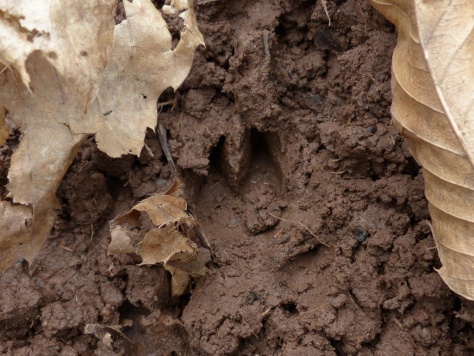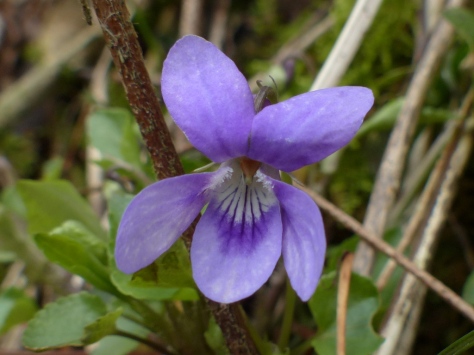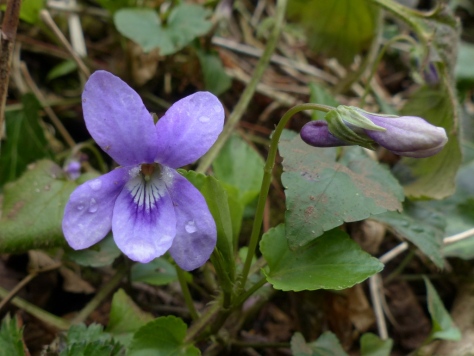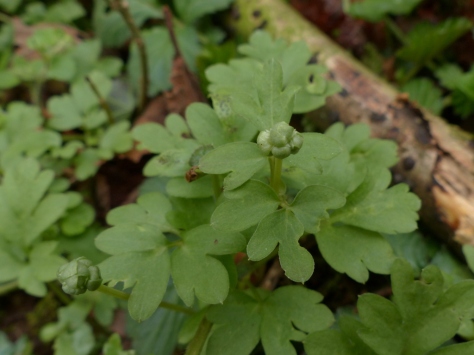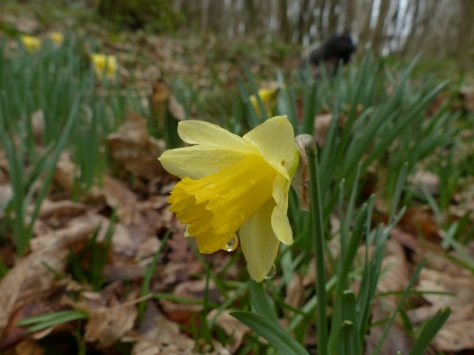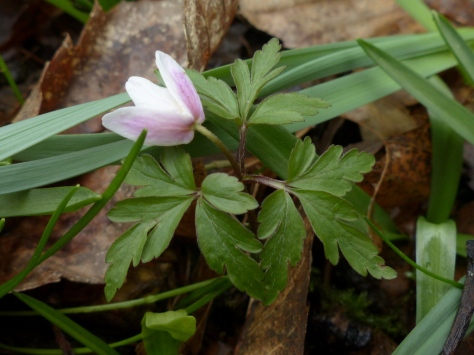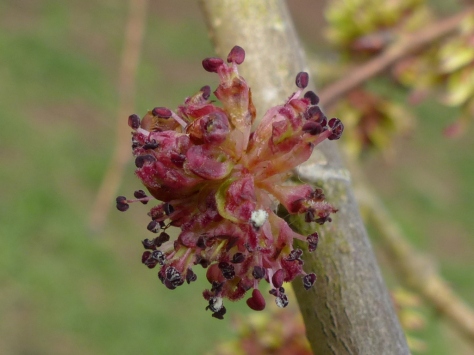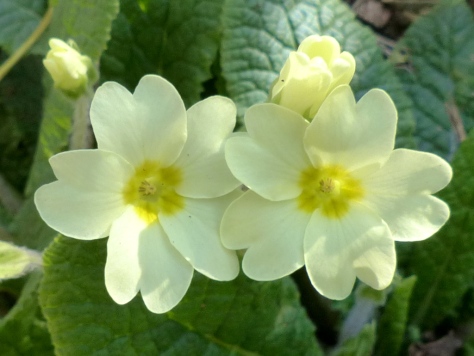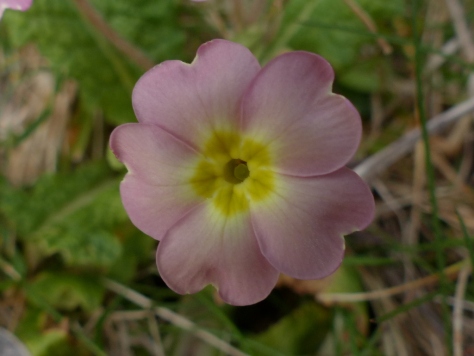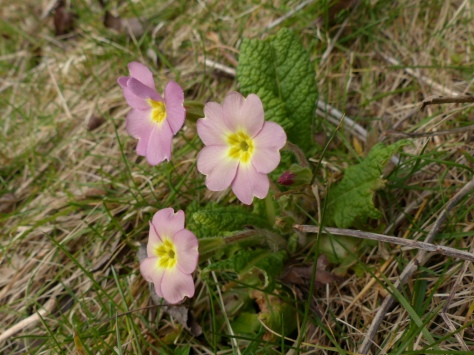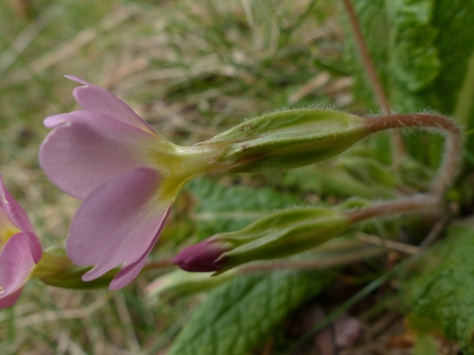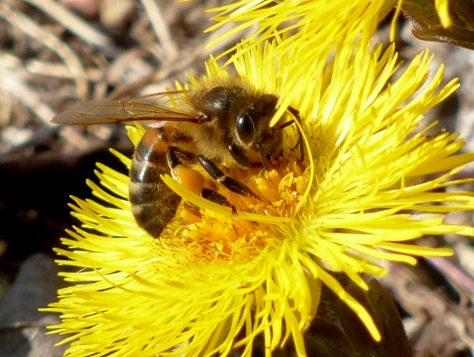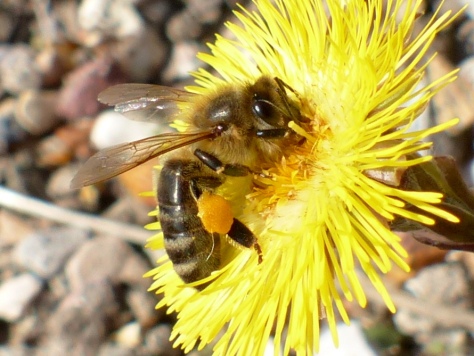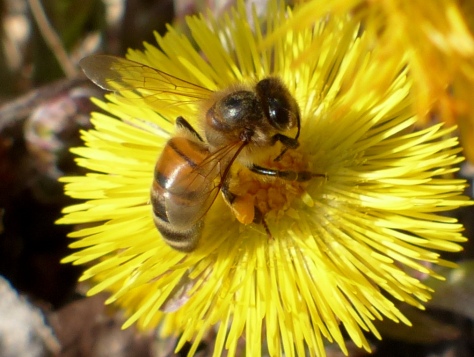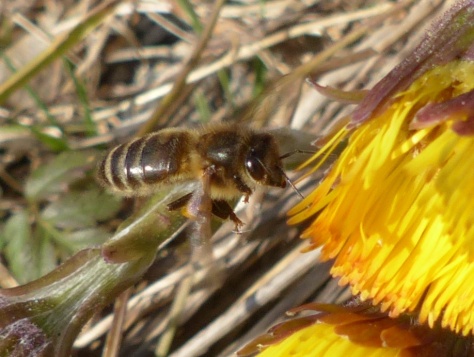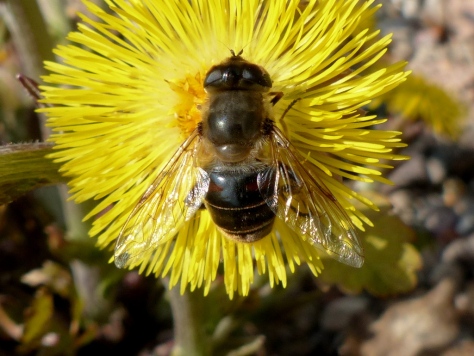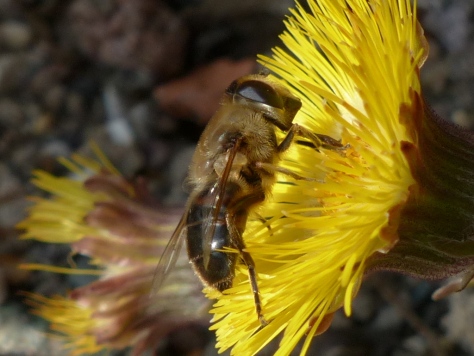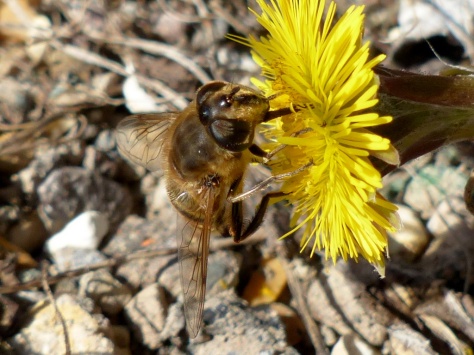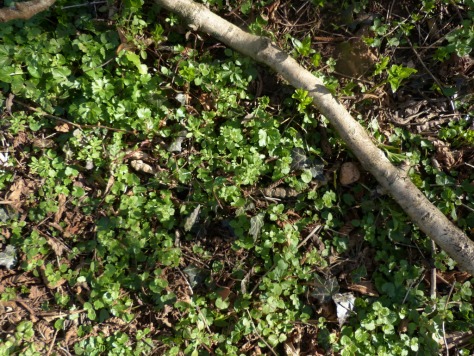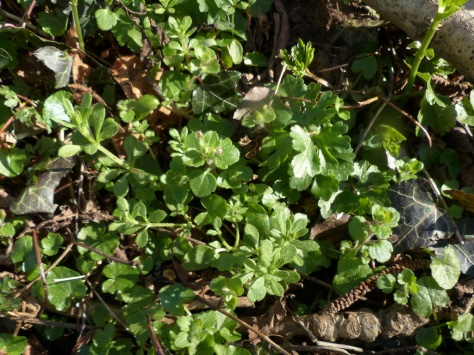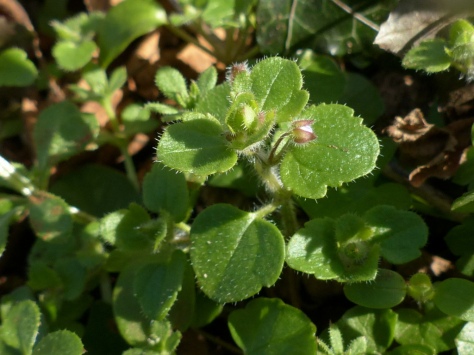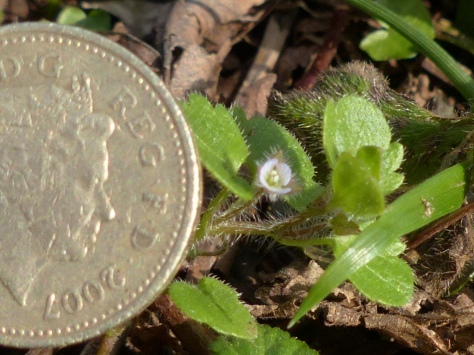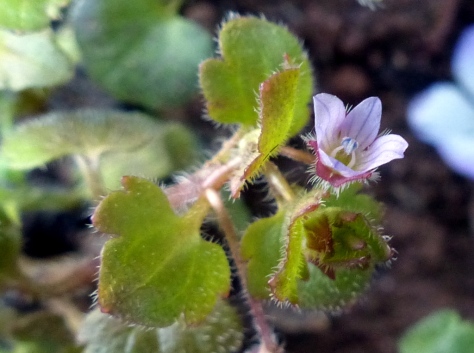Following on from our discovery of the Boar tracks in the wood, Fizz and I have been out hunting. We left the camera out for three nights and it returned one hundred and ninety videos. The pesky Fox above made around a hundred and sixty of those. At least it was good enough to show up in the daytime.
************
You may have noticed that I have been neglecting the blog in recent weeks. I am coming to a time when I have to think about my future and maybe leaving the farm. It kinda stifles my creativity but everything is fine.
I came here with the intention of taking a year off, following my divorce. Just to give me time to think and get rid of any negative thoughts that may have been bothering me. That worked pretty well, I feel happy in myself but my year off has stretched to sixteen months now.
You know that if I leave the farm, what else I will have to leave, don’t you? It stifles my creativity.
 I haven’t spoken to her about this yet. I am working on a plan that will give me another year here and if all goes well, I will leave next April.
I haven’t spoken to her about this yet. I am working on a plan that will give me another year here and if all goes well, I will leave next April.
Nothing is forever.
When I came here my plan was to take my year off and then seek to rehabilitate myself. Go down to the job centre and start a new life.
There isn’t any work around here, I would have to move into one of the local towns and then with luck find myself a job stacking shelves in a supermarket, something like that. It just isn’t ticking all the boxes for me. I am an adventurer and I am not that afraid of life. There must be something better than that, so I will go and find it.
It all stifles my creativity. But…
and it is a big BUT….
Today life is beautiful and we need to enjoy every moment of it, don’t think that we haven’t been doing just that.
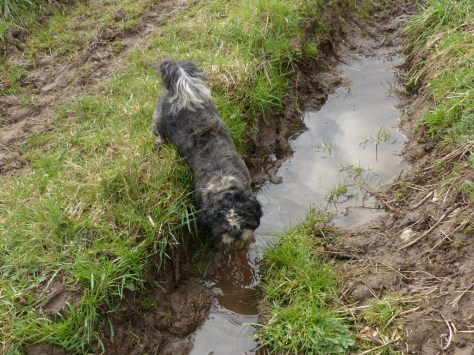 How to track and capture Wild Boar
How to track and capture Wild Boar
This ought to work…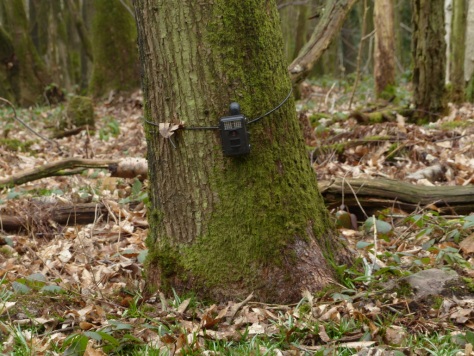 Watch closely….
Watch closely….
The two adult animals in that video are mature sows and I believe they are the mothers of all the little hoglets that you are going to see running around.
There are two other large animals in this sounder, one male and one female. They are last years litter. The female will probably stay with this sounder but the male will leave in the summer. Males are solitary animals.
You can see the two juveniles in this next clip and in case you can’t tell the male is the stroppy one. He is a magnificent looking animal.
Normally we think of a sounder being composed of females and their offspring but the young males will stay with the sounder until they are about sixteen months old and they don’t start growing tusks until they are two years old.
He looks impressive but he is still a lot smaller than his mum as you will see in this next video.
These beautiful animals were kind to me and I got quite a few videos but that will do for now. I don’t want to bore you 🙂
I brought the camera in for the weekend, I might stick it back up there next week. I would quite like to have one more look at them.
I have to be very careful. The local rag printed a single letter condemning last weeks headlines as I expected and that was of course buried on the letters page. It also ran this little story.
 What has been reported as an arrow is almost certainly a crossbow bolt, around here that is the favoured tool of poachers, it is powerful enough to kill and you don’t need a firearms licence.
What has been reported as an arrow is almost certainly a crossbow bolt, around here that is the favoured tool of poachers, it is powerful enough to kill and you don’t need a firearms licence.
The bottom line is that you can get £6.50 a kilo for wild boar meat unbutchered. An adult female weighs around 100-120 kilos and 70% of that is meat. At that rate that’s about £450 for one of those mothers, say it’s less, a little one £200. There is an element here that see the Boar as fair game, in fact you would be daft not to take one (regardless of whether or not it is suckling young). Have you seen that film “Whiskey Galore?” Well the Boar are our local bounty. That is why there is so much hatred stirred up against them. When somebody kills one he is almost doing a public service (They eat children, remember)
I can’t tell you how many times I have been asked, “Aye Lad, seen any Boar yet?”
“No mate. Not a one, the old FC must have shot them all.” 🙂
Wild flowers:
We went up to photograph the Early Dog Violets and they were very nice…
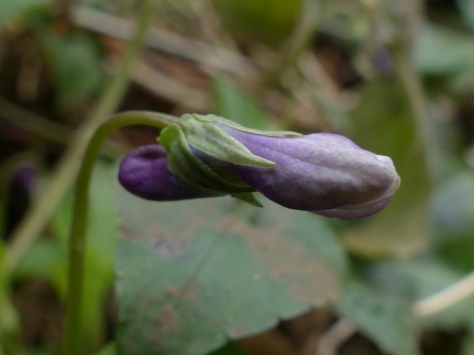 On the way up there we found these….
On the way up there we found these….
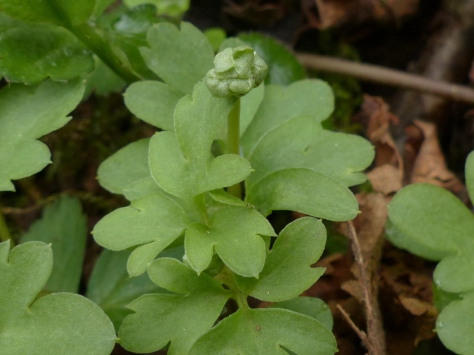 They are the first buds of what will soon become the beautiful and multi-faceted Town Hall Clock (Adoxa moschatellina)
They are the first buds of what will soon become the beautiful and multi-faceted Town Hall Clock (Adoxa moschatellina)
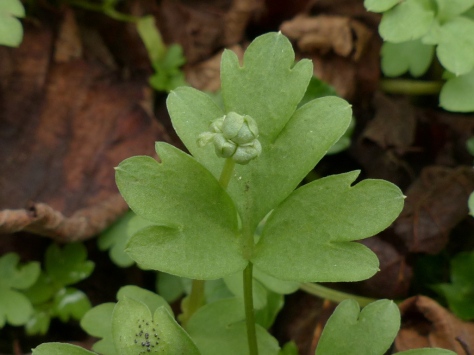 I know that some of you are still up to your necks in snow but here, everything is beautiful.
I know that some of you are still up to your necks in snow but here, everything is beautiful.
Let’s skip the Sweet Violets…
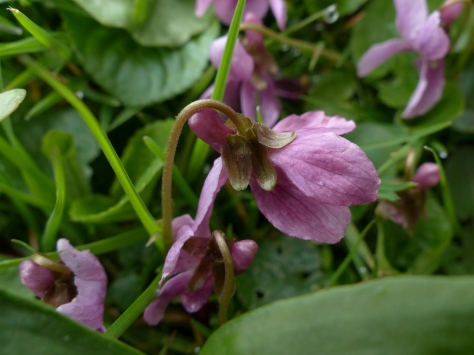 “Woke up one morning half asleep,”
“Woke up one morning half asleep,”
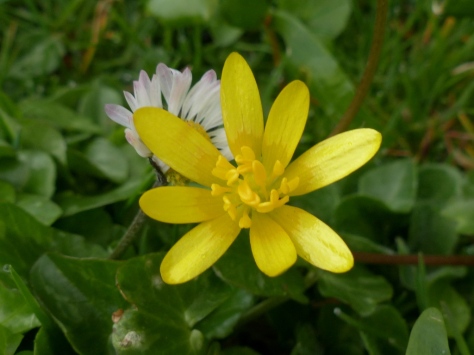 “With all my blankets in a heap,”
“With all my blankets in a heap,”
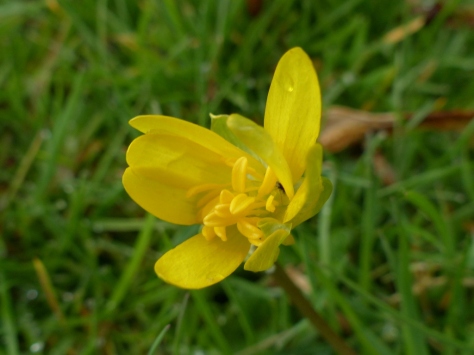 “And yellow roses gathered all around me.” (Lesser Celandine)
“And yellow roses gathered all around me.” (Lesser Celandine)
 I’m just sitting watching flowers in the rain.
I’m just sitting watching flowers in the rain.
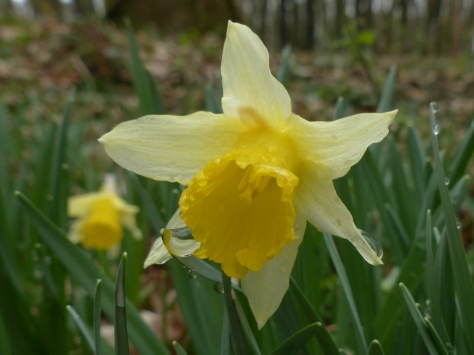 In amongst the Lent Lilies I found my first Wood Anemones.
In amongst the Lent Lilies I found my first Wood Anemones.
They don’t really like the rain.
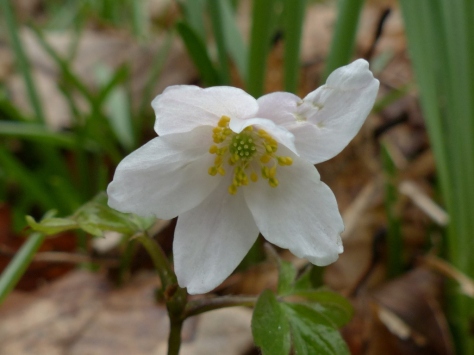 Suddenly there isn’t any shortage of flowers. I don’t have enough time to post all off the species that I photographed.
Suddenly there isn’t any shortage of flowers. I don’t have enough time to post all off the species that I photographed.
The Elm trees flowered, I have been watching them closely and waiting for this.
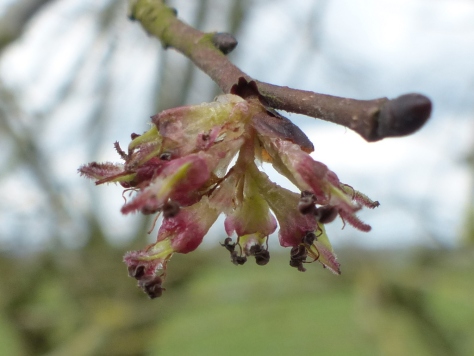 A lot of the stuff that I do is technical, it is because I want to have pictures of a particular stage in a plants development for my “Easy Wildflowers” blog and it isn’t always easy to understand why I get so excited.
A lot of the stuff that I do is technical, it is because I want to have pictures of a particular stage in a plants development for my “Easy Wildflowers” blog and it isn’t always easy to understand why I get so excited.
I enjoyed seeing the sepal development on the Tussilago farfara (Coltsfoot)
 So my future is riding on a Horse. I have put my entire fortune on a magnificent mare called, “Bendy Peg Leg,” if anyone can do it then she can.
So my future is riding on a Horse. I have put my entire fortune on a magnificent mare called, “Bendy Peg Leg,” if anyone can do it then she can.
Assuming that she wins, this is what will happen.:
I will stay at the farm for one more year because I want to write Easy Wildflowers. There are not enough local wildflowers to keep me interested beyond a year. I will go homeless next April. I will put my belongings on my back and go into the wild. How long that I will stay in the wild?, Ha!
I will take a tablet and a solar charger and I will blog from the wilderness and it will be great.
If the Horse loses? She is a sure thing. Bendy Peg Leg, I got it on good authority.
Umm…. Trust me, I know something about animals.


